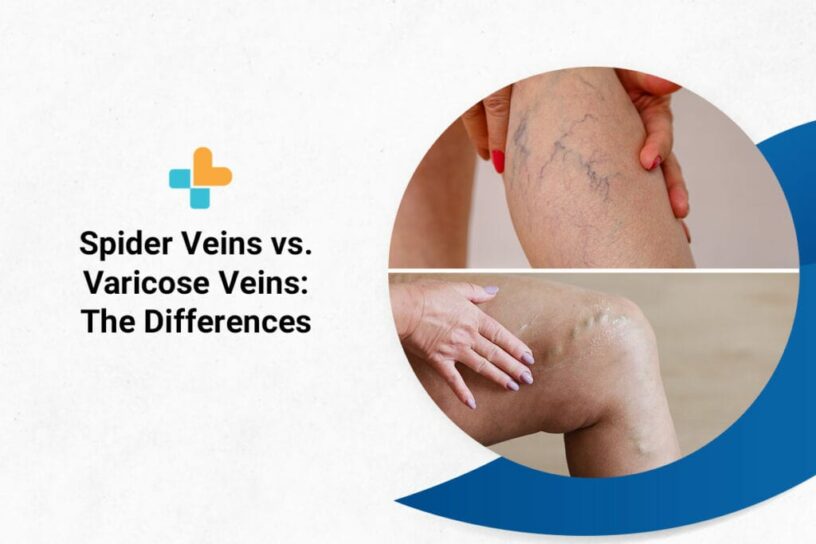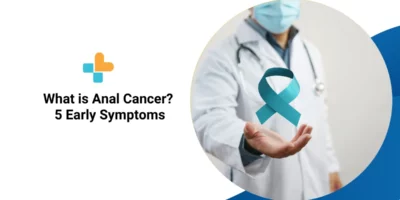Spider and varicose veins are two very similar, yet distinct, conditions involving swelling of veins that can affect your legs and feet. They both involve swollen and enlarged blood vessels just beneath the skin’s surface; however, there are some key differences between them. In this blog post, we’ll deal with the subject of spider veins vs. varicose veins so that you can better understand and identify which one you may have.
We’ll also discuss the symptoms, causes, and treatments of both spider and varicose veins. By the end of this post, you should have a better understanding of these two conditions and be able to tell whether it is the varicose veins or the spider veins on your legs.
Spider Veins vs Varicose Veins: What Are They?
You’ve probably heard of spider veins and varicose veins before, but you may not be sure what the differences are.
In this section, we will look at the different features of spider veins and varicose veins so that you can better understand what they are and how they may affect your health.
What Are Spider Veins?
Spider veins are small, thin veins that often have a “spider web-like” appearance. They typically appear on the legs, face, and chest, but they can also be found on other parts of the body.
They tend to occur when valves in the vein weaken and cause blood to back up and pool in the vein. Because spider veins usually don’t cause any pain or discomfort, people tend to ignore them.
They are usually smaller and located near the surface of the skin. Symptoms can vary a lot, but they usually include pain when walking or standing, redness, swelling, and tenderness around the vein.
What Are Varicose Veins?
Varicose veins develop when the valves inside a vein become weak — typically due to age or obesity — which causes poor blood circulation through the veins.
They have the following characteristics:
- They are large, raised, or swollen veins that bulge out of the skin.
- They’re usually red or blue.
- They cause aching sensations and discolouration of the skin.
- There is swelling and enlargement, especially in the legs. They can occur in any part of the body, but they are most common in the legs.
Varicose veins are more common in people from the Western world. In India, it only affects 5% of the population.
What Is the Difference Between Spider and Varicose Veins?
You’ve probably seen spider veins and varicose veins mentioned in the same sentence, but how do they differ?
In this section, we’ll take a look at the differences between spider veins and varicose veins and explain why each type of vein is important in the body.
1. Spider Veins
They tend to be smaller and less noticeable than varicoceles. However, both conditions can cause difficulty walking due to their enlarged size and proximity to other organs on the leg (such as your bladder or kidney).
Symptoms for both types vary, depending on which part of your body they appear in.
- Spider vein symptoms tend to be minimal — usually just a few red bumps near the surface of the skin.
- Spider veins are small and typically appear close to the surface of the skin. They’re usually caused by hormonal changes or excessive exposure to sunlight — essentially, anything that can cause your body to overproduce blood.
2. Varicose Veins
They are larger and typically protrude from the skin. They can be a result of genetics or ageing (varicose veins often form as we age), but they can also be a result of too much pressure on the large vessels that carry blood away from your feet (this is why varicose veins often occur in feet).
These symptoms can be more painful as blood pools inside these larger veins, causing them to ache, swell, and generally feel uncomfortable.
What Are the Risk Factors for Developing Spider and Varicose Veins?
- Heredity
- Working jobs that involve a lot of standing, such as nursing, hair styling, teaching, and working in a factory
- Obesity
- The hormonal influences that result from pregnancy, puberty, and menopause
- The use of birth control pills
- Postmenopausal hormone replacement
- A history of blood clots
- Conditions that cause increased pressure in the abdomen, such as tumours, constipation, and externally worn garments (like girdles)
- Other reported causes include
- Trauma or injury to the skin
- Previous vein surgery
- Exposure to ultraviolet rays
What Is the Treatment for Spider Veins and Varicose Veins?
Treatment options for both spider and varicose veins vary depending on their severity and location.
- Some treatment options involve laser treatments that shrink the veins back down to their original size. Laser treatment uses light energy to destroy abnormal cells. In other cases, minimally invasive approaches also work.
- Other treatments include medication along with lifestyle changes such as weight loss or exercise, while treatment for clinically significant venous thrombosis may require hospitalization or surgery to reduce thrombus formation within the vein walls.
Varicose vein treatment may involve more invasive procedures like vein stripping or sclerotherapy (a procedure that uses a fine needle to puncture the walls of varicose vessels).
What Are the Prevention Strategies for Spider Veins and Varicose Veins?
Prevention strategies for both types vary — but here are some common ones:
- Keep your feet elevated whenever possible during prolonged sitting periods.
- Avoid prolonged standing.
- Stop smoking.
- Manage your blood sugar levels.
- Maintain healthy cholesterol levels.
- Wear supportive clothing when exercising outside.
Spider Veins vs. Varicose Veins: How To Differentiate and Get Effective Treatment?
Spider veins and varicose veins are both common conditions that can affect the appearance of your skin. However, understanding the difference between these two conditions is key to effective treatment.
If you think you may have either spider or varicose veins, and if you live in Bangalore, Chandigarh, Jaipur, NCR, and Hyderabad, you can visit Ayu Health’s NABH-accredited diagnostic centres for effective treatment and to avail the following advantages:
- Packages with 100% fixed prices.
- 0% EMI, affordable prices, and easy payment options.
- Complete insurance support.
If you need additional resources or would like to speak with a professional, feel free to contact us right away at +91 636-610-0800 or book an appointment on our website. Our expert team is here to assist and support you every step of the way.
Our Hospital Locations
General Surgery Hospitals in Chandigarh | General Surgery Hospitals in Bangalore | General Surgery Hospitals in Jaipur | General Surgery Hospitals in NCR | General Surgery Hospitals in Hyderabad
Our Doctors
General Surgery Doctors in Chandigarh | General Surgery Doctors in Bangalore | General Surgery Doctors in Jaipur | General Surgery Doctors in NCR | General Surgery Doctors in Hyderabad




